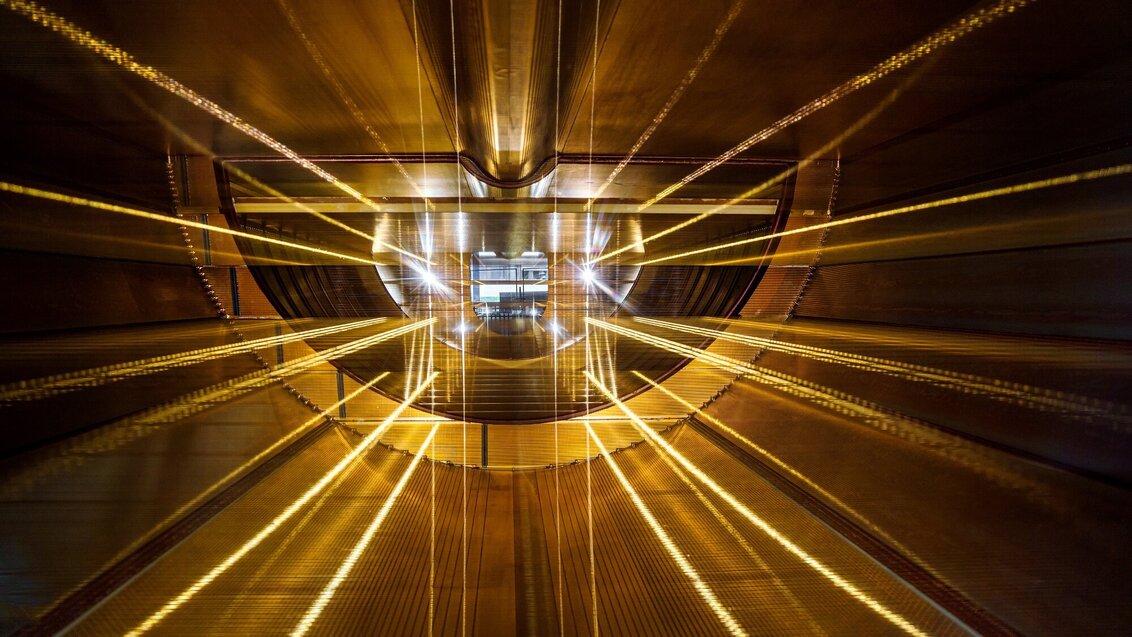
Photo: Dreamstime
Dr hab. Eng. Mateusz Dyndał, Associate Professor at the AGH University from the Department of Particle Interactions and Detection Techniques at the Faculty of Physics and Applied Computer Science, will receive PLN 429,440 from the National Science Centre as part of the PRELUDIUM BIS 4 competition to fund a research project implemented under his supervision by a doctoral student at the AGH University Doctoral School. The project is titled Experimental study of ultraperipheral interactions with leptons in the final state using the ATLAS detector at the LHC.
Project description
The experimental study of ultraperipheral interactions with leptons in the final state using the ATLAS detector at the LHC is one of four major experiments carried out in the Large Hadron Collider at CERN. The experiment belongs to the field of particle physics and is part of an international collaboration that aims to use the full potential of the LHC. The research projects carried out within ATLAS search for answers to fundamental questions, such as: What are the basic building blocks of matter? What are the basic forces of nature? Physicists working within the ATLAS experiment test the hypotheses of the Standard Model, which contains our current understanding of the fundamental components of matter and their interactions. These studies might lead to major breakthroughs, such as the recent discovery of the Higgs boson, as well as to new findings, potentially expanding beyond the Standard Model.
Hadron collisions in the LHC (for instance, protons or ions of lead), under specific circumstances, provide an excellent environment for precise measurements of the standard-model phenomena. For example, lead ion beams, accelerated to significant energies, serve as a strong source of photons – through the cohesion of large number of 82 protons in the lead atom that bring about an electromagnetic field of 1,025 volts per metre. When two such hadrons fly past each other in close proximity at the centre of the ATLAS detector, the photons might interact with each other and create new particles. Therefore, the LHC can be effectively transformed into a high-energy photon collider, studying many different processes in the final state.
***
The purpose of PRELUDIUM BIS is to support the education of doctoral students and to fund research projects implemented by them as part of their doctoral dissertations. The research team consists of only two people – the supervisor who becomes the head project and the doctoral student. The competition also supports international mobility of doctoral students who are obliged to participate in a research internship abroad, funded by the Polish National Agency for Academic Exchange.
In the fourth edition of the competition, 248 scientists applied for funding. Grants of PLN 34,7 million in total will go to 58 researchers. The money can be spent on research, doctoral scholarships, and compensation for the supervisor.
 AGH University Bioceramics Team with a gold medal in Geneva
AGH University Bioceramics Team with a gold medal in Geneva  Pre-election meeting with a candidate for the position of rector
Pre-election meeting with a candidate for the position of rector  Agreement on cooperation with OPAL-RT
Agreement on cooperation with OPAL-RT  Krakow DIANA Accelerator consortium members with an agreement
Krakow DIANA Accelerator consortium members with an agreement  Meeting with the Consul General of Germany
Meeting with the Consul General of Germany  Professor Jerzy Lis re-elected as AGH University Rector
Professor Jerzy Lis re-elected as AGH University Rector  Launch of AGH University Student Construction Centre
Launch of AGH University Student Construction Centre